Ronald Stevenson: Piano Music, Volume One: A Celtic Album
The Scottish pianist Ronald Stevenson (born in 1928), a composer-performer in the grand tradition of Beethoven, Chopin and Rachmaninov, has written a generous quantity of music for his own instrument, ranging from tiny miniatures to his best-known work, the monumental Passacaglia on DSCH, This first of a series of recordings begins with an album inspired by the music of Scotland itself.
Christopher Guild, piano
Listen To This Recording:
- A Wheen Tunes fae Bairns tae Spiel: 4 Scottish Pieces for Piano: I Croon
- A Wheen Tunes fae Bairns tae Spiel: 4 Scottish Pieces for Piano: II Drone
- A Wheen Tunes fae Bairns tae Spiel: 4 Scottish Pieces for Piano: III Reel
- A Wheen Tunes fae Bairns tae Spiel: 4 Scottish Pieces for Piano: IV Spiel
- A Scottish Triptych: I Keening Sang for a Makar
- A Scottish Triptych: II Heroic Song for Hugh MacDiarmid
- A Scottish Triptych: III Chorale-Pibroch for Sorley MacLean
- South Uist (Hebridean) Folk-song Suite: I Sailing Song: Lively, jolly, robust
- South Uist (Hebridean) Folk-song Suite: II A Witching Song for the Milking: Allegro
- South Uist (Hebridean) Folk-song Suite: III A Little Mouth Music: Allegro alla danza
- South Uist (Hebridean) Folk-song Suite: IV A Waulking Song: Moderato
- South Uist (Hebridean) Folk-song Suite: V Spinning Song: Allegro corrente
- South Uist (Hebridean) Folk-song Suite: VI A Tired Mother’s Lullaby: Andante stanco
- South Uist (Hebridean) Folk-song Suite: VII The Christ Child’s Lullaby: Andante semplice
- A Rosary of Variations on Sean O Riada’s Irish Folk Mass
- Scottish Folk Music Settings: I John Anderson, my Jo: Lento con moto
- Scottish Folk Music Settings: II Waly, Waly: Andante
- Scottish Folk Music Settings: III A Rosebud by my Early Walk: Allegretto
- Scottish Folk Music Settings: IV Lang hae we Pairted Been: Andante
- Scottish Folk Music Settings: V From an Old Pibroch: Allegretto/Andante
- Scottish Folk Music Settings: VI Ca’ the Yowes: Andante
- Scottish Folk Music Settings: VII Jock o’ Hazeldean: Andante fluente
- Scottish Folk Music Settings: VIII The Hielan Widow’s Lament: Lento con moto
- Scottish Folk Music Settings: IX Hard is my Fate: Moderato stoico
- Scottish Folk Music Settings: X Ne’erday Sang: Andante ardente
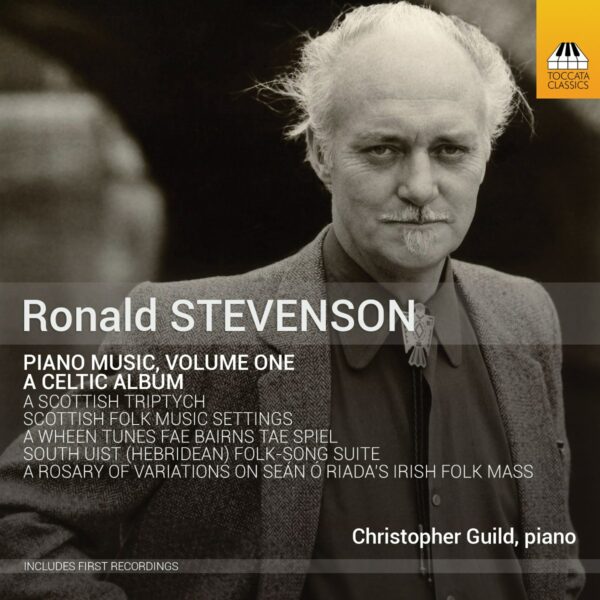
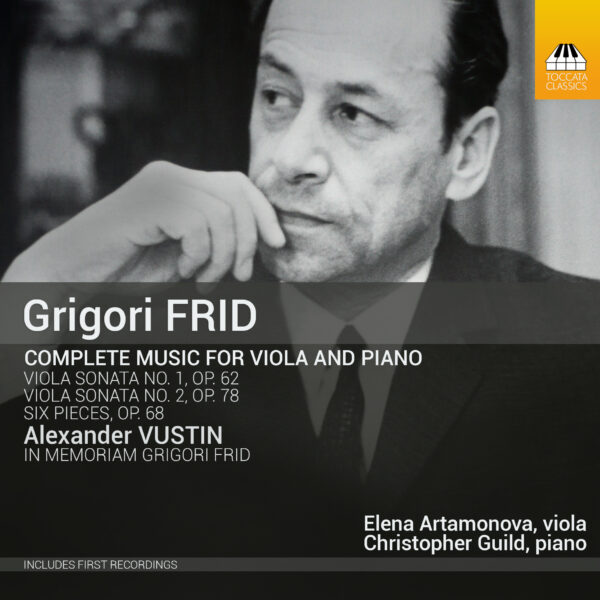
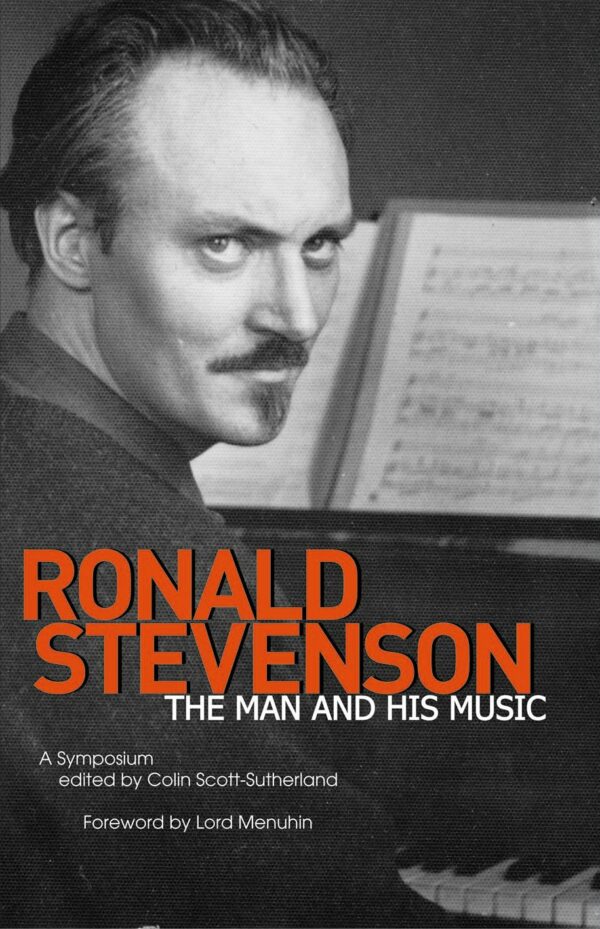
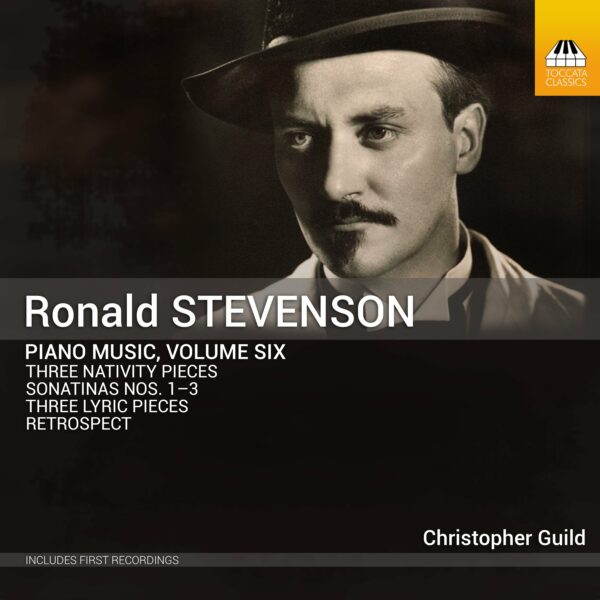
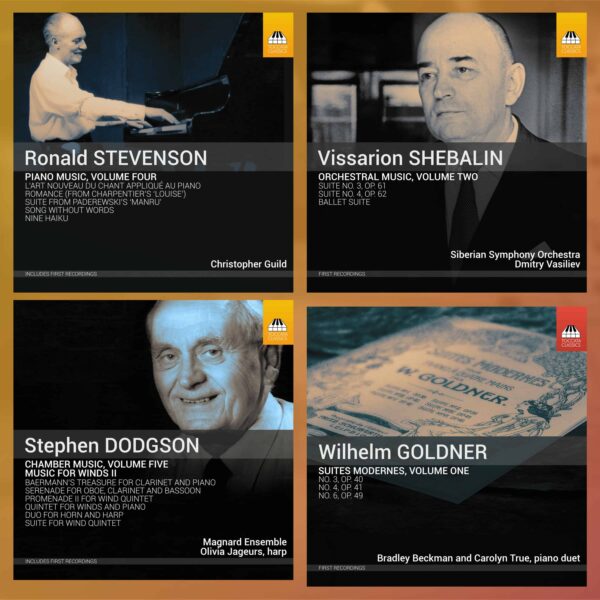
Fanfare Magazine :
‘Great joy! Excuse my uncharacteristic enthusiasm (we are instructed to use exclamation points Über-sparingly here at Fanfare Towers) but this is Volume One of a series of Stevenson piano music series. … Best known perhaps for his huge Passacaglia on DSCH, Ronald Stevenson is evidently equally at home with the miniature. The first item here, A Wheen Tunes fae Bairns tae Spiel (or “A few tunes for children to play” for those less accustomed to the Doric dialect of Scotland), was interestingly the first piece the composer wrote after the Passacaglia mentioned above. There is a distinct Bartókian slant to some of this writing, although the third (“Reel”) is more definably Scottish. The tripping along of the final “Spiel” is well judged by Guild.
The grating dissonances of the 20-minute A Scottish Triptych (1959−67) that follow immediately on may come as something of a shock. … [“Keening song for a Makar: In Memorian Francis George Scott”:] The work is unremittingly serious. The depth of the recording (produced by the pianist and with sound engineer Christopher Tann) certainly adds to the experience, the deep tremolos that conclude it most telling. … The “Heroic Song for Hugh MacDairmid,” with its rather manic glissandos, represents the most advanced writing so far; when single lines emerge from such textures, they hold great power. Written to mark MacDairmid’s 75th birthday, this is a major piece that deserves greater currency. The final panel, “Chorale-Pibroch for Sorley MacLean,” celebrates MacLean, the Raasay poet and friend of MacDairmid. The piano strings are played directly here to imitate the Celtic harp. The effect is simply beautiful, as it is used on a high-lying, resonant section giving the whole an aura of otherworldliness. …
A theme by Irish composer Seán Ó Riada (1913−1971) forms the basis for Stevenson’s 1970 “Rosary” of variations. … Lovely though the folk settings are, this is this piece that was most rewarding for the present writer. Interestingly, this work receives its premiere recording on this disc, something which makes one wonder what other treasures await. …
A welcome from all angles with open arms, then.’
—Colin Clarke, Fanfare Magazine, September 2015
American Record Guide :
‘What a surprise. About the last word I’d use to describe Ronald Stevenson’s music is “charming”. Imposing, impressive, profound? Sure. But never charming. But this release has proved me wrong and shown me a side of this composer I never knew existed. …
The longest and most important work here is the 20-minute Scottish Triptych, made up of a keening song, heroic song, and choralepibroch, dedicated to three fellow Scotsmen: a composer and two poets. … Altogether this is the most stirring and emotionally compelling music I’ve heard from Stevenson and alone worth the price of the disc. …
The other big work here is the 16-minute Rosary of Variations, recorded here for the first time. It’s an interesting concept for a work, mostly meditative and contemplative as one would expect, but with moments of great glory and exultation. …
The other half of the recital is 21 Scottish and Irish folk song settings, ranging from half a minute to about four minutes each. Most are fully tonal and technically in the grasp of amateur pianists, unlike the two large works; but sometimes Stevenson incorporates cranky and crunchy dissonance into his settings, so that I think of him as a Scottish Bartok. These are lovable little gems.
Gorgeous Steinway, strong and rich bass, clear treble—absolutely everything I could want in a piano, and Guild is a fantastic advocate for this almost unknown music. I can’t wait for Volume 2.’
—Stephen Wright, American Record Guide, 09 September 2015
MusicWeb International :
‘Christopher Guild’s playing is always sympathetic and are imbued with a deep and scholarly understanding of Ronald Stevenson’s music. It cannot be faulted.
As always with Toccata albums, the liner notes are excellent. These were authored by David Hackbridge Johnson and provide everything the listener needs to know to enjoy and understand this remarkable music. Non-technical descriptive analysis is balanced by well-considered contextualisation of each piece. There is a brief introduction to Ronald Stevenson, as well as a note about the soloist.
This is a satisfying CD in every way, making a perfect introduction to Ronald Stevenson’s music. I know (as mentioned above) that it has been followed by a further four volumes. Hopefully several more are planned.’
—John France, MusicWeb International
MusicWeb International :
‘The booklet contents are in English only and are easily readable. They’re extensive too: vol. 1: eight pages and vol. 2: twenty pages. The essays for volume 1 are by the composer (600 works including 12 symphonies and 19 piano sonatas) and music writer David Hackbridge Johnson who spent time with Stevenson. For volume 2 the writer is the pianist Christopher Guild. He is as skilled and persuasive a writer as he is a pianist.
Toccata also have in their lists Colin Scott-Sutherland’s massive “Ronald Stevenson: The Man and His Music”. This is well thought through and quite brave, given that Stevenson was at that time thankfully with us and worklists will change. It’s on Toccata Press and dates from 2005. There’s also “Comrades in Art – Correspondence of Stevenson and Grainger 1957-61” Toccata Press, 2010.
Even the track read-out information for Toccata is meticulous and full; thus, each movement of a suite displays the name of the suite, its movement title and a speed indication. This attention to fine detail extends to the sensibly matte surface of the CD’s title side.
The sound for both discs is cool yet not clinical. Both speak nobly and have nothing to prove. The music is sincere and has nothing of the empty braggart about it.’
—Rob Barnett, MusicWeb International